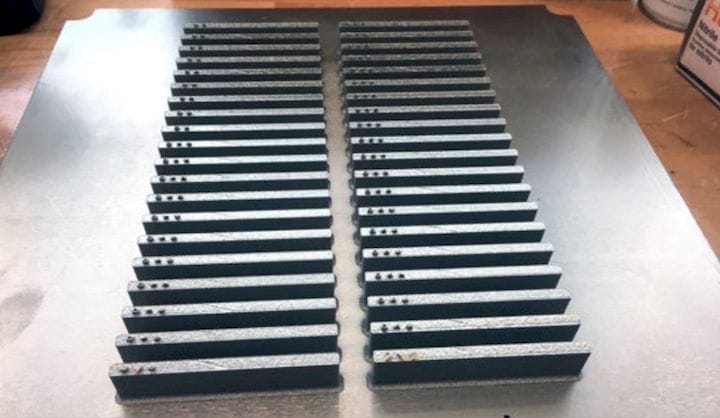![Metal 3D print samples being evaluated [Source: Senvol]](https://fabbaloo.com/wp-content/uploads/2020/05/image-asset_img_5eb0992ad86b5.jpg)
Senvol’s data-driven additive manufacturing analysis system is now less mysterious to us.
In a story published in Metal AM, New York-based Senvol explained in considerable detail the nature of their growing machine learning system, Senvol ML, for additive manufacturing.
The problem they’re attacking is the tedious and expensive testing required to determine the optimum 3D printing parameters for a given metal print. This is quite a complex matter, as there are multiple factors to consider and just as many compromises available.
This problem has, over the past few years, become vastly more important due to the widespread adoption of metal 3D printing by industry to manufacture production-quality parts. In switching over to additive methods of production, manufacturers find their previous extensive knowledge of traditional making technologies are no longer as useful.
Given the need for production parts as opposed to mere prototypes, it is critical for a manufacturer to produce them within designated engineering tolerances. To do so requires the print job to use an optimum set of printing parameters, which are not obvious.
Today this dilemma is usually solved through trial and error: a metal printing operation will print a (sometimes large) number of small samples that are representative of the final part’s geometry using a variety of possible printing parameters.
These sample prints are then examined in close detail, even their molecular microstructure, to verify that the printing parameters work — or do not.
The problem is that all this takes considerable effort to accomplish: not only are you using up valuable metal powder material on un-salable prints, but you consume vast amounts of technician time to organize and inspect the final prints. Eventually the “correct” parameters are discovered and production can begin by using them.
Senvol ML takes a rather different approach. Instead of performing endless tests and “picking the winner”, they use a data-driven approach. Their system carefully monitors four different aspects:
-
Process parameter data (e.g., laser power, scan speed, hatch spacing)
-
Process signature data (e.g., in-situ monitoring data such as melt pool temperature or melt pool depth)
-
Material property data (e.g., microstructure, density, porosity, surface roughness)
-
Mechanical performance data (e.g., tensile strength, fatigue life)
![A sample “quality envelope” mathematical model of metal printing results [Source: Senvol]](https://fabbaloo.com/wp-content/uploads/2020/05/image-asset_img_5eb0992b352ed.jpg)
The idea is to gather up as much information for each category as possible to develop a mathematical model of the scenario. Then the system can provide a reasonable prediction of all four aspects if one is specified.
The approach allows an operator to perform a number of tests, and then the results from them are used to create a model of all the scenarios. Then predictions are made for specific scenarios that have not actually been done. This should be far faster than actually doing all the tests, and allow for much more rapid identification of the “sweet spot” of printing parameters.
Even better, Senvol ML could use previously obtained data from other tests to refine models and reduce the need for testing in given situations.
If you’d like to learn more about how Senvol ML works in much more detail, hit the link below. They include a case study involving the US Navy attempting to determine the optimum parameters for a 316L stainless steel print on a Renishaw device.
All 3D printers have the issue of identifying the optimum printing parameters for a given situation. However, production applications using metal processes are particularly interested due to the expense and risk involved. Tools like Senvol ML should greatly simplify the effort to achieve success.
Via Senvol (PDF)











Aerosint and Aconity have proven out their work in multi-metal powder deposition 3D printing.